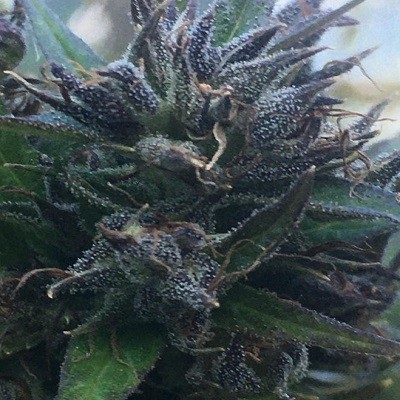
Type : Photoperiod
Sex : Regular
Genetics : Sativa 50% - Indica 50%
Flowering Time: From 42 to 56 days
THC: 2.30%
CBD: 7.00%
Japanese culture has a tradition of cannabis use dating back at least 10,000 years, with scientific certainty of its cultivation on all its islands for more than 2,000 years, and in particular on the northern island of Hokkaido, the Japanese prefecture that has traditionally grown more hemp since time immemorial. In fact, cannabis grows wild in Hokkaido, with authorities having to eradicate nearly a million plants every year. This cannabis strain from Hokkaido grows with a strong and corpulent bearing, with broad leaves and fat stems, growth characteristics that are traditionally associated with Indica varieties. The general appearance and leaf morphology of this Japanese variety bring to mind the indica phenotype of our China Yunnan, although the Hokkaido has darker leaves, greater vigour, longer node spacing and greater branching. On the other hand, this variety from Hokkaido shows semi-autoflowering characteristics, meaning that outdoors it starts flowering not long after the summer solstice. It has a spiky floral development that reminds us of sativas, although the flowering develops very quickly, maturing in only 6-8 weeks. There is no scientific or cultural evidence of the psychoactive use of cannabis in Japan, although this doesn’t mean it can be ruled out completely. Because, although in this country cannabis has been cultivated mainly for textile use, it wasn’t until after WWII that Japan finally regulated cannabis for THC content, therefore the traditional varieties from Hokkaido were probably never intentionally selected in order to completely eradicate their cannabinoid production. In fact, thanks to a recent study carried out by James Farmer of www.seedsofkismet.com on this second (P2) Hokkaido generation that we offer you in this release, 3 main phenotypes have been identified in this strain according to their different chemotypes on main cannabinoids: Group A → High CBD content (10 %), moderate THC content (5,5 %), high CBG content (3%) and a 2:1 CBD:THC ratio. Notable increased terpenes in this genotype across the board, with much stronger and appealing aromas than the rest. Group B → High CBD content (9-12 %), very low THC content (0,4-0,5 %), low CBG content (0,6-0,8 %) and a 22-25:1 CBD:THC ratio. Group C → Low-moderate CBD content (2 %), extremely low THC content (0,1%), extremely low CBG content (0,05-0,1 %) and a 22-25:1 CBD:THC ratio. Therefore, this genetics can lead to the development of 3 lines with different purposes, depending on the chemotypes used in their stabilization: A) Psychoactive strain rich in THC, CBD and CBG. B) Rich CBD hemp strain. C) Hemp strain without relevance in cannabinoid content. Genetic analyses performed on this variety indicate that it is a uniform variety, homozygous and with very little genetic variation, with a rare and unique genotype, not related to other varieties of European or Russian hemp, so the origins of this variety suggest that it is more related to Chinese or Korean cannabis varieties. Its lack of, or very low hermaphroditism is a sign that there has been human intervention at some time in its development. A very interesting pure, stable and fast-ripening landrace for the development of new hemp strains (with high or low CBD content) for medium latitudes (40º-45º), and for cannabis scholars and preservationists, since the HIHA (Hokkaido Industrial Hemp Association) has recently signed an agreement with the French government to introduce new European hemp varieties with very low THC content (less than 0.2%) in Hokkaido, meaning that the old varieties of traditional hemp on the island could be replaced and extinguished in the short term.
| Seller |
|---|